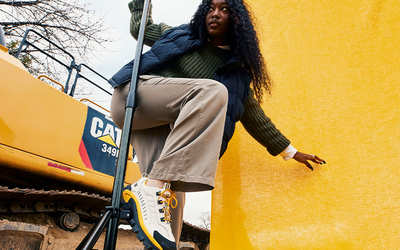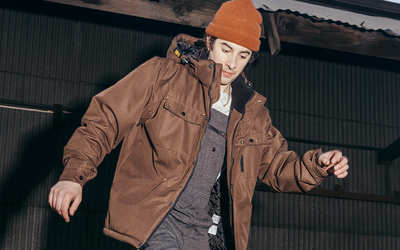DO MORE For Your Community: Kevin Kimwelle
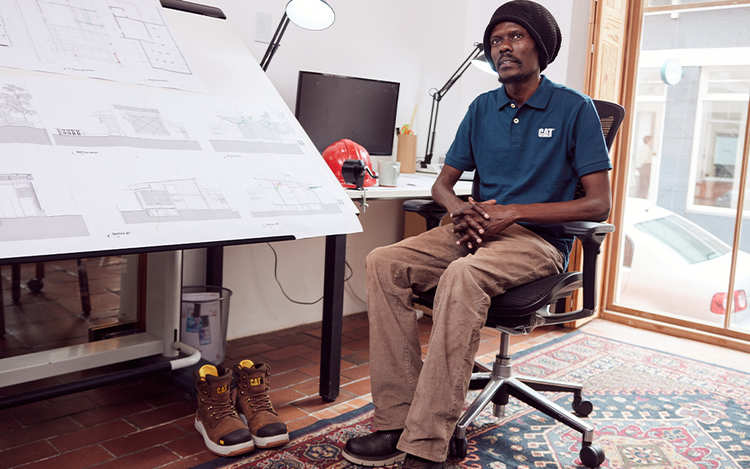
At CAT, we celebrate daring individuals that push boundaries.
For this month’s blog, we had the pleasure of chatting with Kevin Kimwelle, an innovative architect who has done wonders for many communities out there. Through his work, he has changed lives and shown us just how community services and environmentally friendly practices can be integrated into architecture.
1. Tell us about who you are and what you do?
I am a community architect, researcher, and high social impact innovator.
To elaborate, community architecture is not a new genre of architecture, it’s always been there.
It is part of what has been in Africa. If you look at historical rural setups, the history of Ubuntu existed there. We created our architecture which involved people, and this is something that has been lost over time with mainstream architecture because it has become so professionalised, for good reasons of course, such as high-tech developments, health, safety and security. But, I am trying to pull back the idea of community again.
I believe that architecture should be more inclusive so that it can absorb community engagement in a way that is doable, practical, and creates a better impact. This greatly helps with forming those empathetic bonds with a community, learning about their strengths and weaknesses, and learning about their assets, not in worth, but in other social assets. All of this contributes to the designs on a much stronger level.
Essentially, I like to see it as co-creating with the community. The pen is given to the community so that they have a chance to design their way out of poverty, and into opportunity, which in turn, makes the whole process quite an enabling one for the community. This is, perhaps, the main difference between community architecture and mainstream architecture.
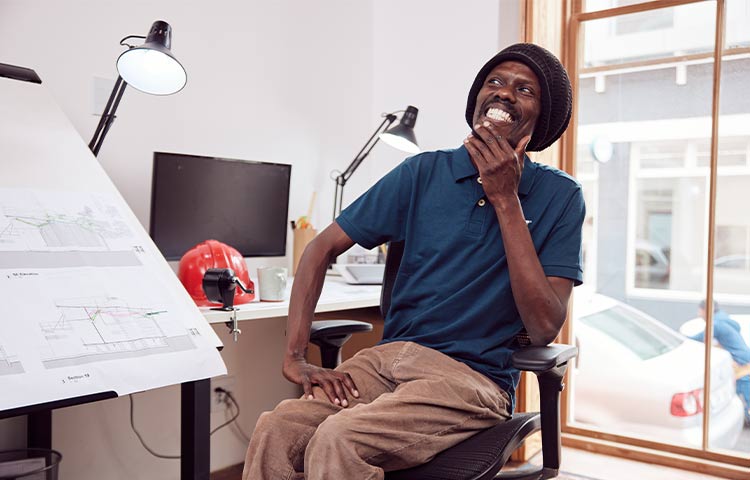
2. Why did you decide to be a community architect, did you always know that this is what you wanted to do?
I have always been very passionate about architecture, in fact, I knew that this is the career I wanted to pursue when I was in primary school. I took the long path though, beginning with music, and then engineering, and eventually landed in architecture.
It comes to me naturally, it’s something that I feel in my bones. And, the passion I have for this is driven by the community.
3. Why are human-centred designs important to you?
Human-centred designs have become so important in today’s day and age, because, we live in an era of mass production.
Consider the climate change and adversity that we face today, it is because we hold so much power to mass produce. An idea is thought of today and produced tomorrow. In saying that, we have relied more on engineering, and forgotten the human part of design.
And, this is not to say that the commerce part of design is bad. Yes, it does generate profit which raises the GDP and in turn, raises the profit line, however, the critical factor that contributes to impacting humans and the planet, is the human part of the design.
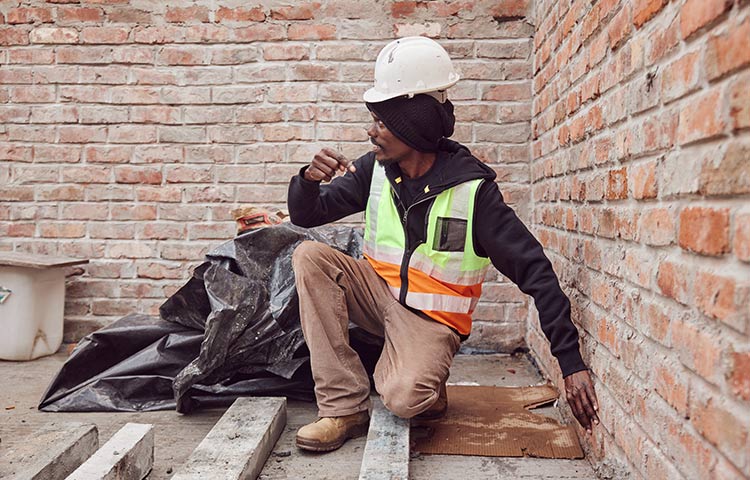
4. Where/How do you draw inspiration for your designs?
I draw inspiration from my surroundings. When I am called to a job, I take off my architectural glasses and really try and understand the people/community/business.
For example, with the community work I do, I try to learn about the community, who are they and what is their story. This way, I can understand the context fully.
My other inspiration is Africa. The amount of ingenuity in Africa is underestimated; I draw a lot of my inspiration when I see children playing with drums that they made themselves, or other handmade toys. Or, if you go to a market in Lusaka, and you see the innovation of people creating temporary spaces to sell their items at this market. To me, these examples highlight an authentic, African way of thinking when it comes to design, and it absolutely inspires me.
Additionally, global change also inspires me. I believe that it is time to fix this planet, and I always question, why should we create new materials, when there are plenty of usable materials going to dump sites. Yes, it may cost a little more time/money, but we owe this to our planet.
5. What is the planning process behind each design and project?
The process differs for each project because it depends on the project itself. However, there are some similarities in the planning process of my projects since I use recycled materials.
Firstly, we assess the environment to identify any existing waste materials or natural resources available within the specific area. Thereafter, we assess the waste materials, and this is where I conduct the research, development, and innovation (RDI) with these materials to see how best to use them.
In parallel to this part of the process, we are simultaneously engaging with the community, and identifying the skill set required to work with these materials.
6. Why do you prefer using recycled material for your projects? Are there any risks involved, such as the quality or durability being compromised?
A lot of the time, I actually get the question ‘How do businesses react to recycled materials being used,’ and I’d have to say, if you put design at the core and you really do a good job, you will answer this question naturally. Your solution will not just be solution-driven or art-driven, it should tick off all the boxes of a good design.
For example, the Silindokuhle creche in Joe Slovo township. When we were collecting wine bottles for this wall, people were hesitant because the thought of a wine bottle wall didn’t sound appealing. Yet, the stunning wall, that let in beautiful warm light through these bottles spoke volumes. Suddenly, this wasn’t a wall made from wine bottles, but rather, a statement wall showing artistic creativity.
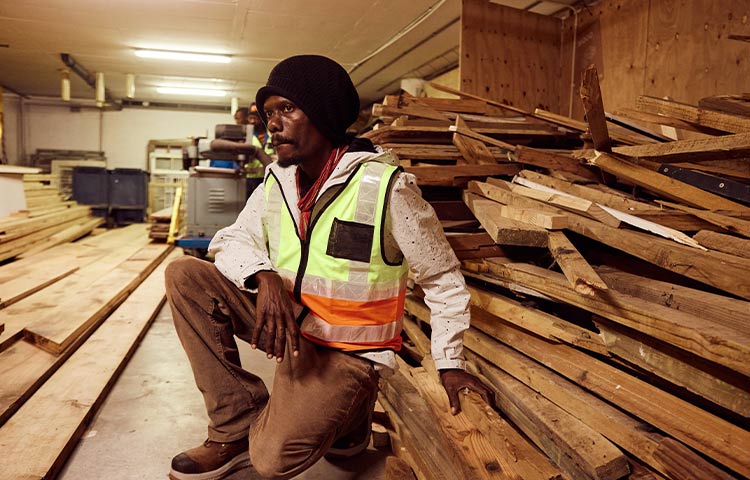
7. With the various projects you’ve done, which one has been your highlight, and why? How did that project socially impact the community at large?
I’ve been very fortunate in the sense that all my projects have had their own, meaningful highlights. So, it’s difficult to pick just one. The above-mentioned Joe Slovo project comes to mind because on the opening day, there was a strike going on, but the community surrounded us, and ensured that there were no disruptions as a result of the strike, they were saying ‘This is theirs’ and opening it in such a traditional Xhosa setting.
Then I also think of Khusta Moko, who we built the bike for, this one was a journey of six months of understanding exactly what he does, then another three months of coming up with designs with him. I think back on those moments where Khusta realized that for once, his ideas were being taken seriously and how he reacted to this. We could see that he was good with his hands, but his health was deteriorating due to his living conditions. That is when we thought, why not build him a home? This really took him by surprise at the time. Sadly, since then, Khusta has passed on, but it’s memories and legacies like these that live on.
8. CAT believes in empowering the bold and doing more for your community. What does DO MORE mean to you?
I think DO MORE goes above and beyond business as usual. Yes, businesses and other corporate entities do give to communities, but what is unique about this campaign is being able to capture what could be done beyond business as usual. Be it through influencers, ambassadors, or individuals going beyond. It showcases how we can break beyond the mould, doing more means rethinking what we know, and certain systems and stepping beyond what is required by regulation, business, ethics, or responsibility to be able to impact communities. In a way, it brings the community aspect back to the centre.
This campaign allows more architects like me to do more and be bold.
If this exceptional individual has inspired you as much as he inspired us, then we encourage you all to go out there and be as bold as you can! Kevin showed us what it means to him, to be bold, and now we ask you to do the same. So, lace up your Cat Footwear, and embark on the path to DOING MORE!

